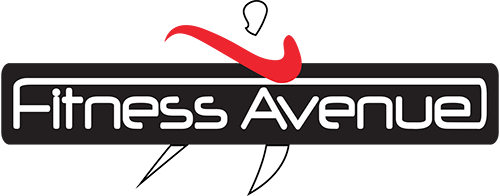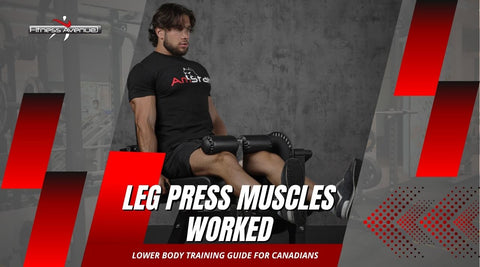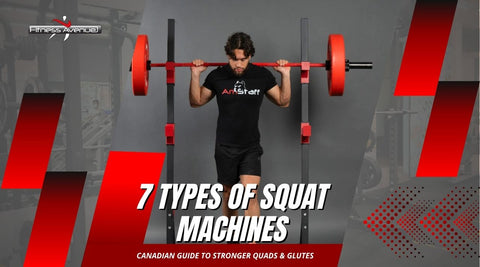Understanding which muscles the leg press targets is crucial for anyone serious about building lower-body strength and size. The leg press machine primarily activates the quadriceps muscles while engaging secondary muscles, including the glutes, hamstrings, and calves. By strategically adjusting foot placement, you can shift emphasis between multiple muscle groups to address specific training goals and ensure balanced development throughout your legs.
Key Takeaways
- The leg press mainly targets the quadriceps, especially the vastus lateralis and vastus medialis.
- Foot placement variations significantly alter muscle activation patterns for targeted development.
- High foot placement emphasizes glutes and hamstrings, while low placement maximizes quadriceps engagement.
- Wide stance positions target the inner thighs (adductors) and glutes more effectively.
- Maintaining form and working through the right range of motion ensures safer training and better muscle activation.
- The leg press offers unique advantages over squats for certain training goals and populations.
What Are the Primary Muscles Worked by the Leg Press?

The leg press exercise primarily targets the quadriceps complex, which consists of four distinct muscles working together to extend the knee joint. Scientific research consistently demonstrates that the vastus lateralis and vastus medialis show the highest activation levels during leg press movements.
Quadriceps (Front Thighs)
The quadriceps group serves as the main driver during leg press exercises. When the knee is flexed to roughly 90 degrees, the vastus lateralis (outer thigh) and vastus medialis (inner thigh) show maximum activation. The rectus femoris, although still important, exhibits slightly reduced activation compared to isolated knee extension exercises due to its dual role spanning both the hip and knee joints. The vastus intermedius, though deeper and less studied, contributes significantly to the overall force production during the movement.
Gluteus Maximus (Glutes)
The gluteus maximus functions as a powerful secondary mover during leg press exercises, particularly as a hip extensor. Their contribution becomes more pronounced with deeper ranges of motion and higher foot placement positions. The glutes work synergistically with the quadriceps to drive the pressing movement and provide essential hip stability throughout the exercise.
Hamstrings (Back of Thighs)
The hamstring complex, including the biceps femoris, semitendinosus, and semimembranosus, plays a crucial supporting role. Interestingly, hamstring activation increases as the knees approach full extension, providing joint stability and eccentric control during the pressing phase. This activation pattern complements the function of the quadriceps and contributes to balanced muscle development.
Calves (Gastrocnemius & Soleus)
The calf muscles provide additional support during leg press exercises by maintaining plantar flexion and foot position stability on the platform. The gastrocnemius shows increased activity as the knees approach full extension, working in coordination with other secondary muscles to ensure proper force transmission through the kinetic chain.
How Foot Placement Affects Muscle Activation
Strategic foot placement modifications represent one of the most effective methods for customizing leg press training to target specific muscle groups. Each variation creates distinct biomechanical conditions that alter muscle activation patterns.
High Foot Placement
Positioning feet higher on the platform increases hip flexion while reducing the knee flexion angle. This modification significantly enhances activation of the hamstrings and glutes by creating more favourable length-tension relationships for these muscles. The increased hip involvement requires greater hip extension force production during the concentric phase, making this variation excellent for posterior chain development.
Low Foot Placement
Low foot positioning increases the knee flexion angle while limiting hip involvement, thereby enhancing quadriceps activation. This variation positions the quadriceps in a lengthened state, enabling them to generate greater force in accordance with the principles of muscle physiology. The biomechanical changes create conditions that force the quadriceps to handle a larger portion of the movement's force requirements.
Wide Foot Placement
Wide stance positioning dramatically increases involvement of the hip adductors, glutes, and hamstrings. The wider foot position creates different force vectors that emphasize frontal plane stability and require coordinated activation of multiple muscle groups. This wide stance leg press variation proves particularly effective for targeting the often-neglected inner thigh muscles while simultaneously developing the posterior chain.
Narrow Foot Placement
A narrow stance leg press emphasizes the outer portions of the quadriceps, particularly the vastus lateralis, while reducing contribution from adductors and glutes. The biomechanical changes create different force vectors that uniquely challenge the quadriceps, potentially contributing to more balanced quadriceps development and improved muscle definition.
How Do Leg Press Variations Target Different Muscles?

Different leg press variations allow practitioners to systematically target specific muscle groups based on individual goals and needs. Single-leg variations increase unilateral strength demands and address potential muscle imbalances between limbs. Partial range of motion techniques can emphasize different portions of the strength curve, while tempo variations alter the metabolic demands and muscle activation patterns.
Combined foot placement strategies, such as high-wide or low-narrow combinations, offer additional customization options. The high-wide combination maximizes hamstring, glute, and adductor activation while minimizing quadriceps involvement. Conversely, low-narrow combinations provide maximum emphasis on the quadriceps for targeted development.
Quality equipment, such as the AmStaff Fitness LB200 Compact Leg Press Machine, allows for precise foot placement adjustments, enabling the effective implementation of these variations. Its adjustable footplate accommodates different stance positions while maintaining stability throughout the movement.
How Does the Leg Press Differ From Squats?
While both exercises target similar muscle groups, they offer distinct advantages for different training goals. With a stable, supported seat, the leg press allows you to handle more weight while protecting your spine. This makes it particularly valuable for individuals with back concerns or those seeking to maximize lower-body loading without upper-body limitations.
Squats engage additional stabilizing muscles and core strength requirements that the leg press cannot replicate. The free weight nature of squats demands greater proprioception and balance, translating more directly to functional movement patterns. With a fixed movement path, the leg press enhances safety and lets you isolate muscles more effectively by varying foot placement.
For serious training facilities requiring maximum durability and versatility, the AmStaff Fitness TB59 Commercial Leg Press/Hack Squat Machine offers both leg press and hack squat capabilities in a single, robust unit, accommodating a range of training approaches. Find out how Hack Squat and Squat differs.
Common Mistakes That Limit Muscle Activation

Several common errors can significantly reduce the effectiveness of leg press training. Allowing the knees to cave inward during movement places undue stress on joint structures and reduces optimal force transmission. Using a partial range of motion without a specific programming rationale limits the potential for muscle development and the benefits of joint mobility.
Placing feet too low on the platform with limited ankle mobility can create excessive knee stress, while positioning them too high may limit the range of motion. Rushing through repetitions reduces time under tension and muscle activation quality. Poor back positioning against the pad can lead to spinal stress and reduced force transmission efficiency. Using too much weight without maintaining proper form can also prevent injury and limit muscle development.
How to Maximize Muscle Activation in the Leg Press
Optimizing leg press effectiveness requires attention to multiple variables and ensuring proper form throughout each repetition. Maintain proper knee tracking, aligned with the toes, throughout the movement to ensure optimal force transmission and joint safety. Use the full range of motion while respecting individual mobility limitations to maximize muscle activation and development.
Slow and controlled movement, especially during the eccentric (lowering) phase, boosts time under tension and muscle activation. Ensure complete foot contact with the platform to prevent slipping and maintain stable force transmission. Progressive overload, achieved through systematic increases in weight, repetitions, or training frequency, drives continued adaptation and improvement.
Strategic variation of foot placement within training sessions or across training phases provides a comprehensive stimulus to all lower-body muscle groups. Investing in quality lower body training machines ensures consistent performance and safety while implementing these advanced techniques. Combine leg press training with complementary exercises to target movement patterns and muscle groups that are not optimally addressed by the machine-based exercise.
Also read: 7 Types of Squat Machines
FAQs
Is the leg press better than squats?
Both exercises offer unique advantages depending on individual goals and limitations. The seated leg press works multiple leg muscles while allowing for heavier loading with back support, making it ideal for those with spinal concerns or seeking maximum lower body muscle stimulation. Squats engage more stabilizing muscles and translate better to functional movement patterns, offering more emphasis on balance and coordination.
Do leg presses grow glutes?
Yes, the leg press can effectively target the glutes, especially when using high foot placement and a wide stance. The degree of glute activation increases with deeper ranges of motion and specific foot positioning strategies that emphasize hip extension, the outer thigh muscles, and the entire range of motion. This makes it a useful addition to a structured workout plan designed to build strength and shape the lower body.
What is the advantage of the leg press?
The primary advantages include reduced spinal loading, the ability to handle heavier weights safely on a weighted platform, precise muscle targeting through variations in foot placement, and the ability to accommodate various mobility limitations. The guided movement path encourages good form while making it easier to correct strength imbalances between the legs. Additionally, the fixed starting position allows lifters to focus on progressive overload without worrying about balance.
What are the disadvantages of a leg press machine?
Disadvantages include limited functional carryover compared to free-weight exercises, reduced engagement of stabilizing muscles, potential for excessive loading beyond safe ranges, and an inability to address unilateral movement patterns as effectively as some alternatives.
Take Your Leg Day to the Next Level
Ready to maximize your lower body development with professional-grade equipment? Our comprehensive selection of equipment provides everything you need for effective leg press training and complete lower body development. Whether you're setting up a home gym or upgrading a commercial facility, we offer solutions that deliver exceptional results.
Since 2007, we've provided thousands of customers across Canada and the US with premium fitness equipment backed by expert guidance and fast shipping. Transform your leg training today with professional equipment designed to deliver results and withstand years of intensive use.
Citations:
- https://pmc.ncbi.nlm.nih.gov/articles/PMC7369968/
- https://pubmed.ncbi.nlm.nih.gov/18545207/



